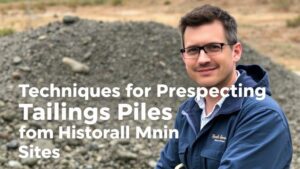Techniques for Recovering Flour Gold in Slow-Moving Stream Zones
Techniques for Recovering Flour Gold in Slow-Moving Stream Zones
Flour gold, the microscopic particles of gold often found in natural settings, presents a unique challenge for prospectors, particularly in slow-moving stream zones. This article discusses effective techniques for recovering flour gold in such environments, integrating principles of sedimentology and practical methodology. The focus will be on various recovery methods, tools, and case studies to provide a comprehensive overview of gold prospecting in these specific conditions.
Understanding Flour Gold
Flour gold is typically defined as gold particles that are smaller than 100 mesh (0.15 millimeters). Due to their fine size, they are not easily recoverable using traditional gold mining techniques, which often target larger nuggets and flakes. In slow-moving streams, where water velocity is low and sediment deposition is high, these fine particles can accumulate but are also susceptible to being washed away easily.
The Characteristics of Slow-Moving Stream Zones
When examining slow-moving stream zones, it is crucial to understand their hydrology and sediment dynamics. These areas often have the following characteristics:
- Low water velocity leading to increased sediment deposition
- Varied substrate composition, including sand, silt, and clay
- The presence of natural riffles and pools that can trap gold
Recognizing these features can help prospectors identify the most promising spots for gold recovery.
Techniques for Recovery
There are several methods for recovering flour gold in slow-moving stream zones. Each technique has its advantages and limitations, depending on factors such as the volume of water available, the amount of sediment present, and the prospectors equipment.
1. Panning
Panning is one of the oldest and most straightforward methods for recovering flour gold. This technique involves the following steps:
- Collecting sediment from the stream bed, particularly in areas with natural riffles.
- Filling a pan with the collected sediment and submerging it in water.
- Gently shaking and washing the sediment in the pan, allowing the lighter materials to overflow while the heavier gold particles settle at the bottom.
While panning is labor-intensive and may yield small amounts of gold, it is an excellent way to gauge the potential of a stream for larger-scale recovery.
2. Sluicing
Sluicing involves the use of a sluice box, which is a more efficient tool compared to panning. The sluice box employs water flow and riffles to separate gold from other materials. The process includes:
- Setting up the sluice box in a position where water can flow through it efficiently.
- Running a consistent flow of water while feeding sediment into the box.
- Allowing the riffles to trap heavier gold particles as the lighter materials are washed away.
According to a study published by the U.S. Geological Survey, sluicing can improve gold recovery rates by up to 90% compared to traditional panning.
3. Concentrating Tables
For larger operations, a shaking table can be useful for refining the recovery process. These tables use gravitational separation to enhance the concentration of gold by mimicking the motion of water and gravitational pull. Key steps include:
- Feeding sediment onto the table, which has grooves or riffles.
- Activating a reciprocating motion that separates materials based on density.
This method can yield higher purity gold, significantly increasing profit margins in places with substantial flour gold deposits.
Case Studies: Successful Flour Gold Recovery
Several cases demonstrate the effectiveness of these techniques in slow-moving stream zones:
- A prospector in the Sierra Nevada gained a significant yield by methodically panning in a slow-moving tributary of a larger river. Over the course of a summer, he recovered several ounces of flour gold by focusing on eddy currents and backwaters.
- In Alaska, commercial sluicing operations have reportedly recovered upwards of 15 grams of gold per cubic meter of sediment processed, illustrating the effectiveness of using larger equipment to capture the finer gold particles.
Potential Questions and Concerns
Prospectors may have concerns regarding the environmental impact and legal implications of gold recovery in stream zones. It is essential to consider the following:
- Check local regulations regarding gold prospecting to ensure compliance with environmental laws and permits.
- Avoiding over-dredging or damaging sediment health is crucial to preserving aquatic ecosystems.
Actionable Takeaways
To effectively recover flour gold in slow-moving stream zones, consider the following strategies:
- Begin with panning to assess the potential of an area before investing in larger equipment.
- Use sluice boxes for a more efficient recovery process, especially in sediment-rich locations.
- Stay informed about local laws and conservation practices to ensure responsible prospecting.
By employing these techniques and being mindful of environmental considerations, prospectors can successfully uncover the hidden treasures of flour gold in slow-moving stream zones.

